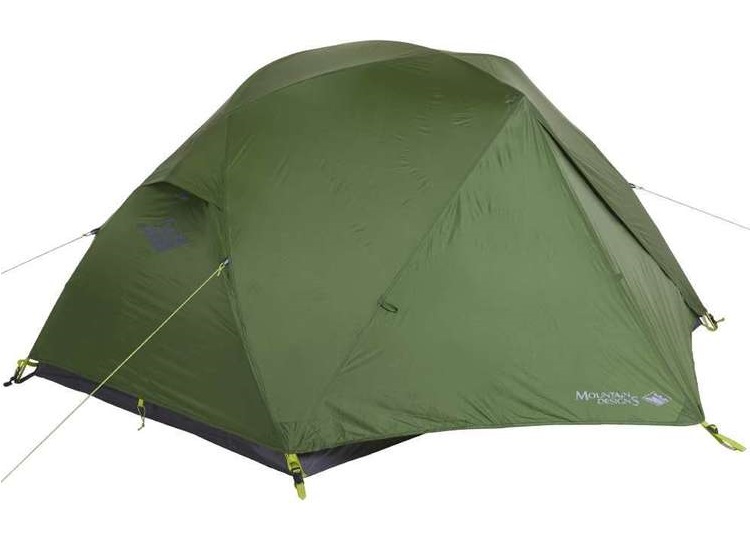| Your browser is not supported. | ||
|
Please browse our site using any of the following options:
| ||
How To - Choose A Tent

Your perfect tent will provide you with the right weather protection and space at a low weight. With this in mind, you should be considering the weather conditions you expect to meet and how many people you want to accommodate. Then you can compare design features and weight of the tents suitable to your needs. After all, a tent is more than a place to sleep - out in the wilderness, it soon becomes shelter, home and security, so it's important to choose wisely.
Weather Conditions
Think about the weather you will most often be using your tent in. If it's warmer climates, ventilation is a priority; if it's during winter or in alpine conditions, heavier fabrics and protection are key.
3-Season Tents - 3-season tents typically have good ventilation and are suitable for all weather conditions except snowfall and strong winds. Condensation-reducing and bug-proof features come in handy in hot conditions. Since they are light and compact, 3-season tents are widely used by hikers, backpackers and cyclists across summer, autumn and spring.
4-Season Tents - 4-season tents (or sometimes called mountaineering tents or expedition tents) offer protection in heavy weather. To withstand snow loads and deflect high winds, the fabrics are heavier, the waterproof coating is thicker and the profile/silhouette is lower. They also usually have more poles (or a stronger pole configuration) than other tents. The flipside of this added protection: more weight and less ventilation. Packing a tent of this size and weight is best for snow activities like ski touring, winter camping or mountaineering.
Single Wall Tents - Single wall tents are made of waterproof-breathable fabrics. Without a separate inner canopy, you get more headroom and usable floor than with other tents. They work best in cold and dry conditions, but don't perform that well in hot and humid weather. Choose a single wall tent if you are after a lightweight option for cool weather.
Ultralight Shelters - Hammocks, bivy tents and tarps aren't really tents as such, but do classify as 'shelter'. They are super light and take up very little packing space, but don't offer the same weather protection. This can leave an inexperienced adventurer exposed and vulnerable. Choose these if you are well versed in the outdoors and have long distances to cover.
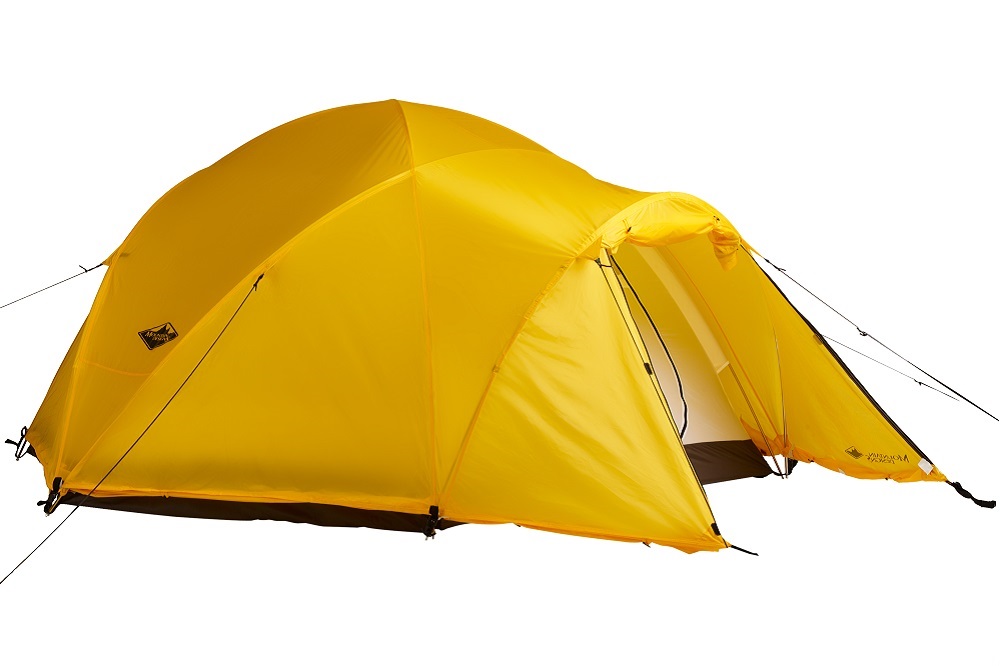
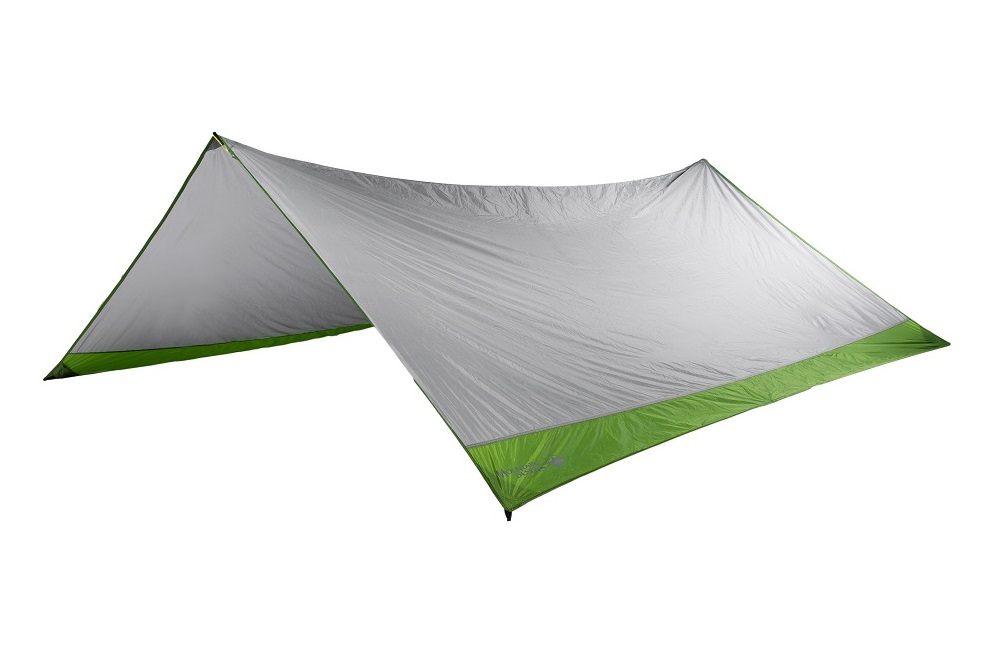
The weather you expect to face will predominantly dictate your tent choice, from 4-season winter designs (left) to ultralight shelters (right).
Size
Along with weather conditions, the size of your tent is the other main factor in your decision-making. When determining how much space you need, you should consider the following:
Number of Users - Tents are usually classified according to their sleeping capacity. This refers to the number of people who can sleep in the inner part of the tent. Ratings go from one to four persons plus. The tent should also have room for your essential gear, though some equipment might still have to be stored outside. The vestibule offers additional storage and here your gear should still be safe from rain.
Height & Floor Area Dimensions - Consider a tent that is a good physical fit for you, then think about how you and everything else will fit in the tent. Know your height and use the dimensions of your sleeping mat to calculate how much space will be necessary. Then compare with the floor plans of tents in question and work out how you and possible companion(s) will fit in. Look at the peak height (the amount of height the tent has from the floor to its highest point) and the floor area (the physical footprint of the tent). Keep in mind the angle of the tent walls - some part of the floor may only be usable as storage space (tunnel-shaped tents have elongated floor shapes, while dome-shaped tents provide steep walls with more useable floor space).

There is plenty of key information in the floor plan to help you make your decision, including floor area dimensions, the peak height of the tent, pole structure and set-up, and entry configuration.
Pictured here is the floor plan of the Geo 2-Person Tent.
Shape & Pole Structure
There are a lot of different pole configurations, which generally determine the shape of the tent and how easy it is to set up. There isn't necessarily a perfect type of pole structure; the key here is to find a design that balances ease of set-up with liveability and comfort. Typical tent designs include:
Hoop Tents - Using a single hoop in the middle, these light tents compromise on inner space and rigidity.
Dome Tents - Their very stable structure consists of at least two poles that cross in the apex. They allow for easy access and maximise internal living space.
Tunnel Tents - These elongated tents are better suited to snow loading and extreme conditions. Many will have two openings and vestibules.
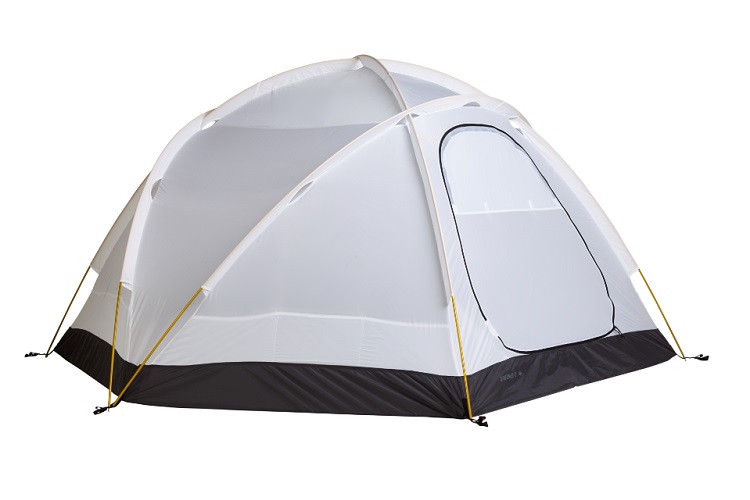
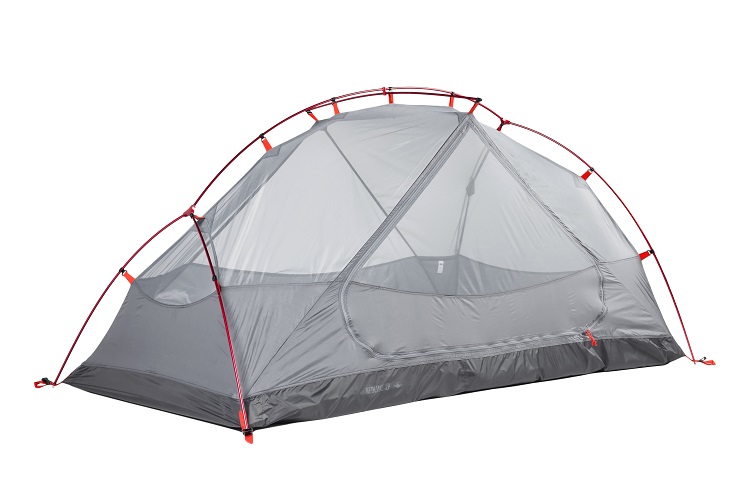
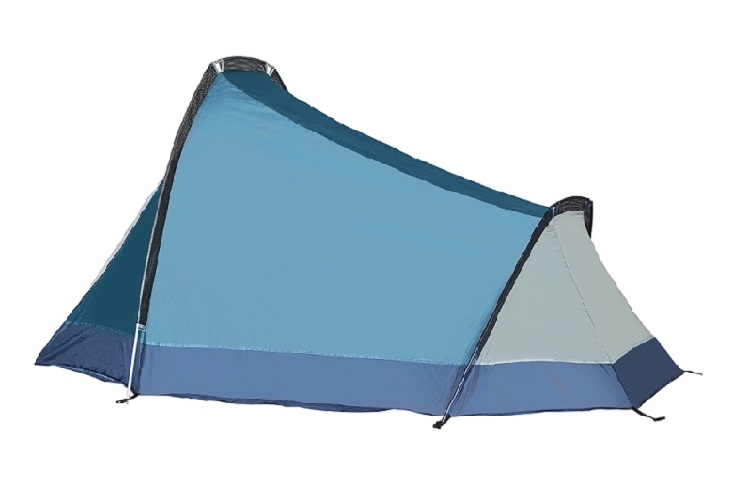
Different tents have different pole structures to deliver their stability as well as how they set-up, examples pictured showing the dome structure (left), a single hub-and-pole system (middle), and a tunnel/hoop hybrid design (right).
Durability
A tent is one of the more expensive pieces of outdoor equipment you'll buy, so you want something that does the job not just once or twice, but season after season. Points of priority when it comes to durability include:
Poles - Most tent poles are made with aluminium for lightweight strength and longevity of use. The aluminium is also reasonably cost-effective in the manufacture, and is easy to repair if there is an issue while outdoors. Try to avoid fibreglass poles as they can break easily.
Fly & Floor Materials - Tent material is usually measured in deniers, with the lower the number the lighter the weight. Most tents use durable base fabrics with greater denier measurement, which will better handle rubbing and scrapes on abrasive ground surfaces. The outer or rain fly will vary in its measurement depending on its purpose. Again, this is all about getting the right balance, in this case between durability and protection, and weight.
Zips - Quality zips are important on tents, especially when you are bunkering down inside. They should be waterproof and robust enough to handle the outdoors.
Weight
Like with all outdoor gear, you want to choose the lightest option available that still performs how you need it to. Typically mountaineering tents will weigh more than backpacking tents, as they have more poles and heavier fabrics to give them the protection they require. The challenge here is always to strike the right balance between weight, protection and space. Then there's carrying comfort - the longer you have to carry your gear, the lighter you want to travel. Not all gear is essential, and with skill and experience you can improvise convenient features at your campsite.
Design Features
Useful tent design features include:
Tub Floor - Protects from the elements getting inside.
Vestibule - This is the area just outside the tent door that is covered by the tent fly when it is pegged out. It provides additional storage room and allows rain-protected changing of clothing or boots without the space restrictions of the tent.
Hooded Vents - Allow ventilation in all weather conditions.
Gear Lofts - Great for storage of small, quick-grab items, and helpful when drying gear.
Internal Pouches & Pockets - Used for organising and storing personal items.
Pole Shock Cord System - Most poles these days fit together with an elasticated shock cord, which makes assembly quick and easy.
Pole Sleeves - These are fabric tubes that add stability by closely connecting the pole and the tent. They are particularly useful when pitching a tent in dark or windy conditions.
Pole Clips/Straps - Another connection between tent and pole allowing ventilation, though plastic clips are prone to break in cold conditions, and test your patience when wearing gloves. Velcro tabs or straps are often easier.
Colour-Coded Poles - Simply make for easy pitching.
Freestanding Structure - A freestanding tent uses poles for its structure but can stand up on its own without pegs or stakes. They are simple to set up, can be moved around quickly and easily, and can be positioned where staking the ground is difficult (like sand or pebbles). A non-freestanding tent can't stand up without being pegged out.
Pegs & Guylines - Most tents come with pegs or stakes to anchor the tent. Often there is some additional tensioned rope for extra tie-down stability, these are the guylines.
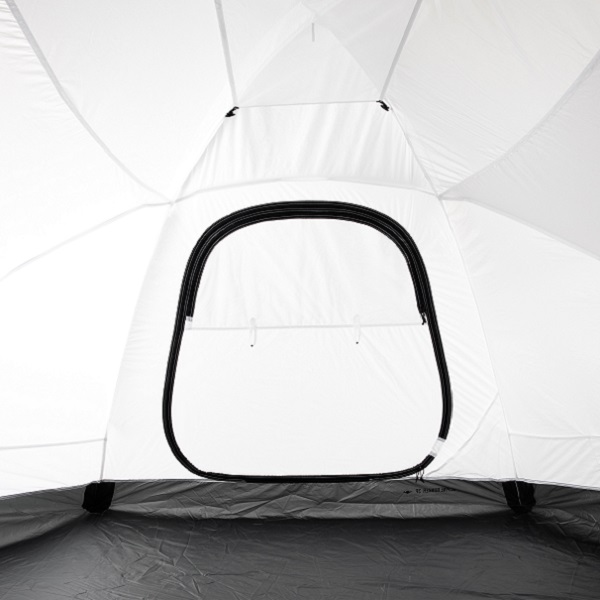
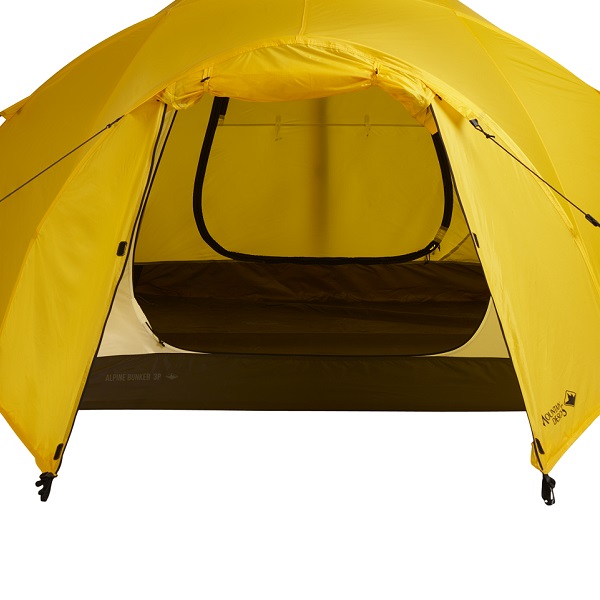
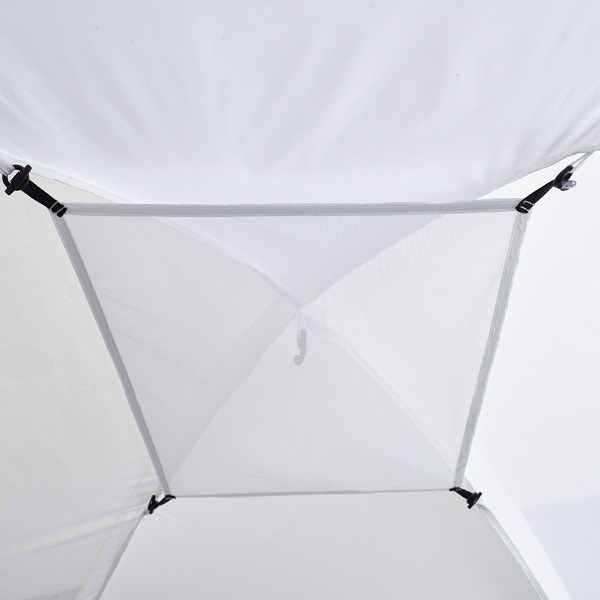

Design features to make life easier include (from left to right): a tub floor to guard against the elements; vestibule(s) for extra storage space; gear lofts for stowing and drying gear; and pole sleeves for easy set-up in dark or windy conditions.
